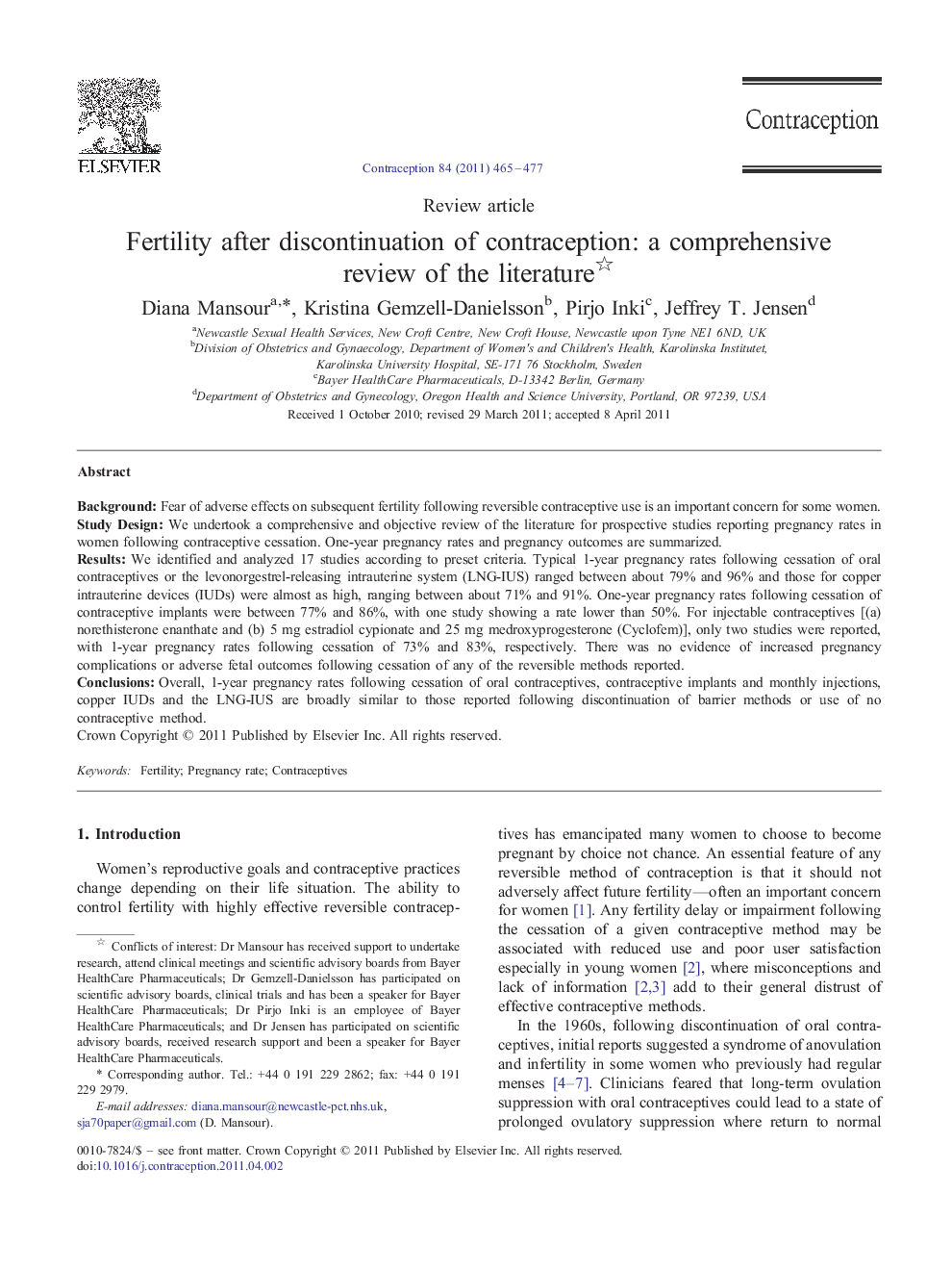| Article ID | Journal | Published Year | Pages | File Type |
|---|---|---|---|---|
| 3914390 | Contraception | 2011 | 13 Pages |
BackgroundFear of adverse effects on subsequent fertility following reversible contraceptive use is an important concern for some women.Study DesignWe undertook a comprehensive and objective review of the literature for prospective studies reporting pregnancy rates in women following contraceptive cessation. One-year pregnancy rates and pregnancy outcomes are summarized.ResultsWe identified and analyzed 17 studies according to preset criteria. Typical 1-year pregnancy rates following cessation of oral contraceptives or the levonorgestrel-releasing intrauterine system (LNG-IUS) ranged between about 79% and 96% and those for copper intrauterine devices (IUDs) were almost as high, ranging between about 71% and 91%. One-year pregnancy rates following cessation of contraceptive implants were between 77% and 86%, with one study showing a rate lower than 50%. For injectable contraceptives [(a) norethisterone enanthate and (b) 5 mg estradiol cypionate and 25 mg medroxyprogesterone (Cyclofem)], only two studies were reported, with 1-year pregnancy rates following cessation of 73% and 83%, respectively. There was no evidence of increased pregnancy complications or adverse fetal outcomes following cessation of any of the reversible methods reported.ConclusionsOverall, 1-year pregnancy rates following cessation of oral contraceptives, contraceptive implants and monthly injections, copper IUDs and the LNG-IUS are broadly similar to those reported following discontinuation of barrier methods or use of no contraceptive method.
